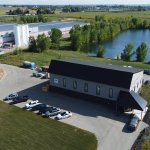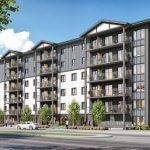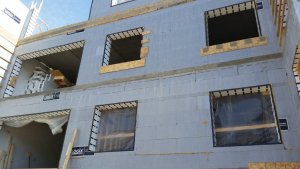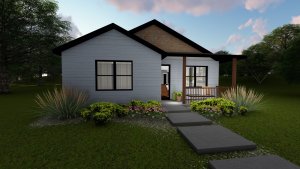Quiet Homes
Remember Mr. Roger’s neighborhood? Back then, it was a quiet, bucolic place with an occasional barking dog or ringing of a bicycle bell. Nowadays, we’re assaulted by an ever growing barrage of noisy lawn mowers, leaf mulchers and snow blowers. Our neighborhoods are surrounded by trains, planes and automobiles, creating a cacophony of honking horns, wailing sirens and deafening kettle drum rumbling.
Excessive noise grates on the nerves and can affect human health. Even schools have come to recognize the need for noise ordinances not only to protect the student’s ability to concentrate, but also to protect the neighborhood from sounds of the band or the kids in the gymnasium. Home design has similar needs.
There are a few ways to build sound protection into a wall. One way is to create a complex series of baffles and damper clips to help ‘confuse’ the sound waves and dissipate the noise. Another way is to add solid mass that can block the noise outright. Wood frame walls can be modified with clips and several extra layers of sheetrock. All this, however, can get very expensive.
A simpler alternative to these costly measures is a concrete wall. Concrete is a great noise barrier, especially for low register sounds like truck engines, but noise tends to bounce off hard surfaces and can create echoes inside a room. The trick to fix this is to add a soft cover to the walls so that the sound waves head straight into the mass walls, ending in total silence.
The combination of foam and concrete in the Logix wall is just the ticket—no noise coming through the walls and no reverberation of noise inside the walls. This is the ideal situation to design a whole house sound system, or you could also use Logix ICF for interior partition walls surrounding a media roof for the ultimate sound experience. And the kids can use the room for band practice!
Mmmm… the sound of silence. It can be as straightforward as building your house with solid bones.











